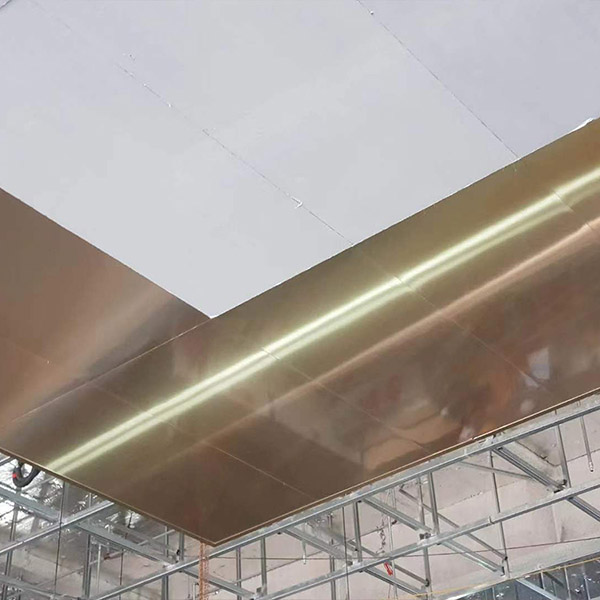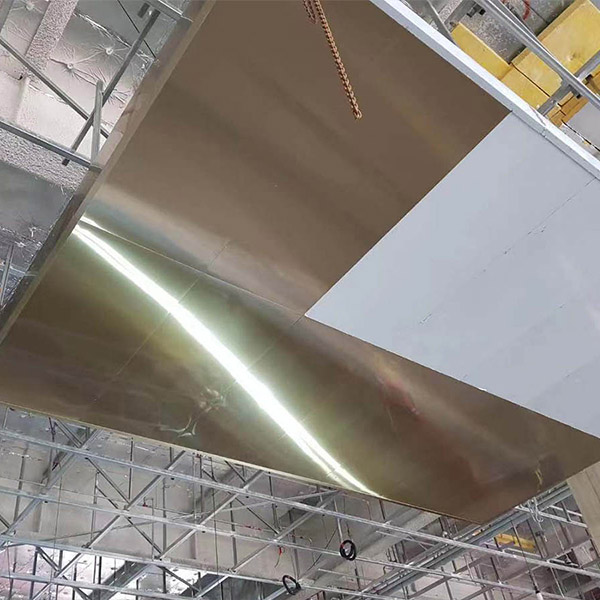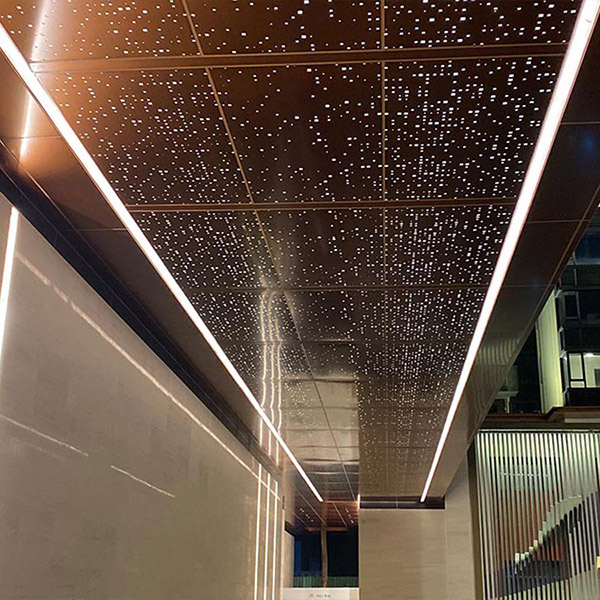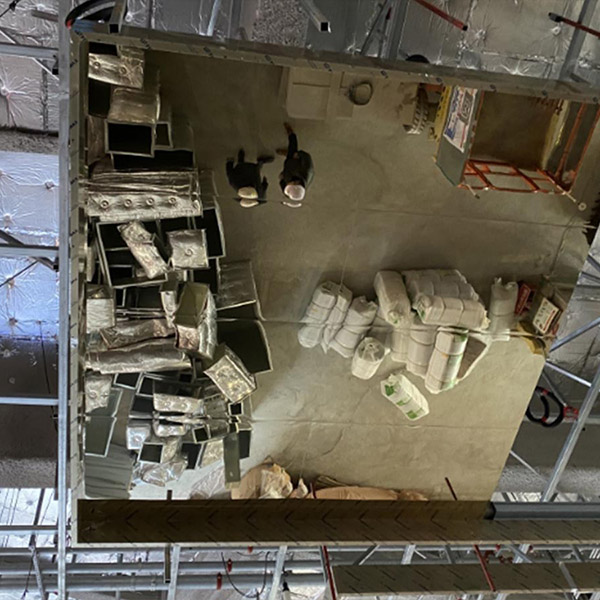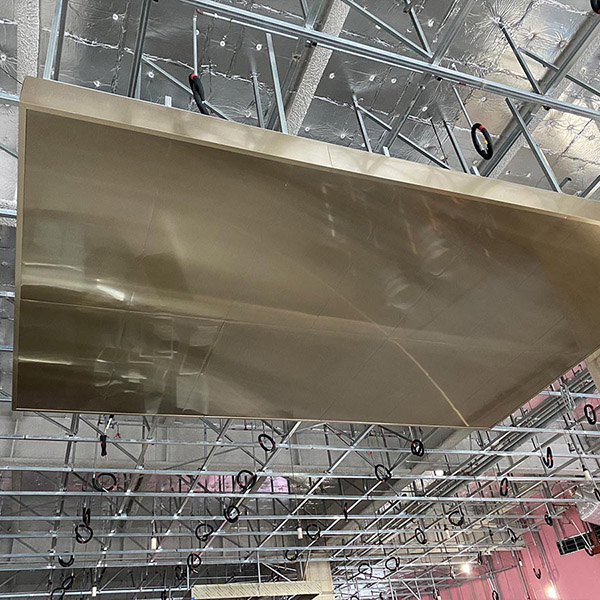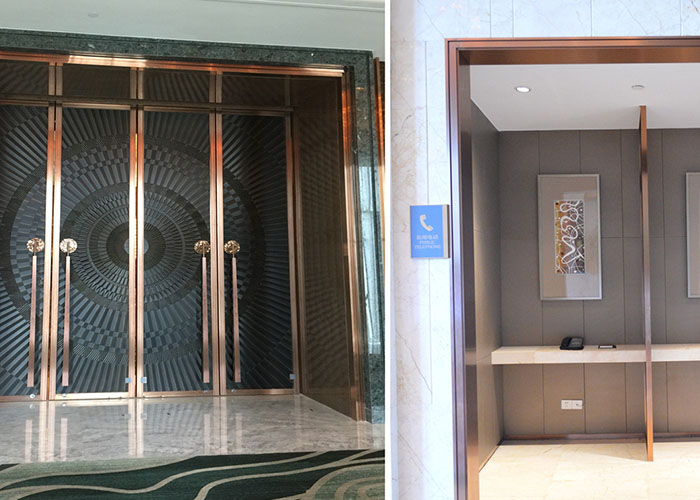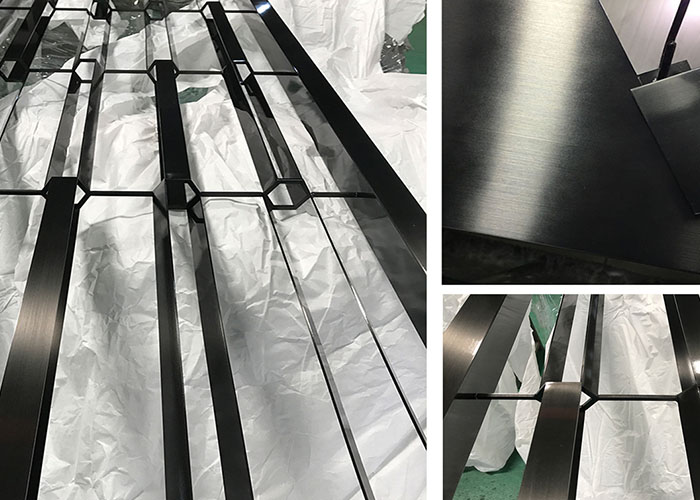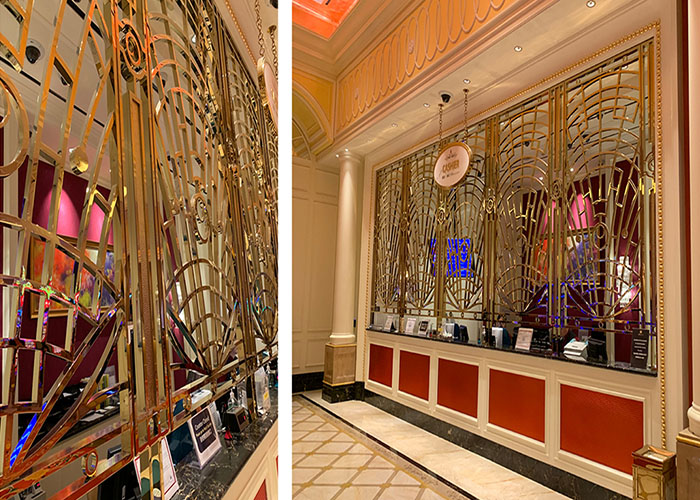Lightweight: Easy to handle and transport, reducing installation costs and structural loads.
Thermal Insulation: Retains heat in cold climates and keeps cool in warm climates, reducing energy costs and HVAC requirements.
Acoustic Performance: Controls sound by absorbing or damping noise, improving room acoustics.
Fire Protection: Slows or prevents the spread of fire, protecting people and property.
Moisture Resistance: The impervious surface prevents water penetration, preventing mold and mildew growth.
Design Flexibility: A variety of finishes are available, allowing for the creation of modern, stylish designs. Applications include hotels, commercial spaces, casinos, subway stations, shopping malls, conference rooms, offices, airports, theaters, concert halls, and more.
Regarding installation, it’s easy to transport and install, reducing labor requirements and construction time.
Aluminum honeycomb ceiling systems actively improve indoor environmental quality by optimizing thermal comfort and acoustic performance. This makes them a strategic choice for spaces where occupant experience, energy efficiency, and sound management are crucial, such as commercial offices, educational institutions, and public venues.
The lightweight nature of aluminum honeycomb ceilings has a direct positive impact on the overall structural integrity of a building by reducing deadweight loads. This allows for greater design flexibility in the supporting structure, potentially reducing material costs for the building frame while improving safety and longevity.


